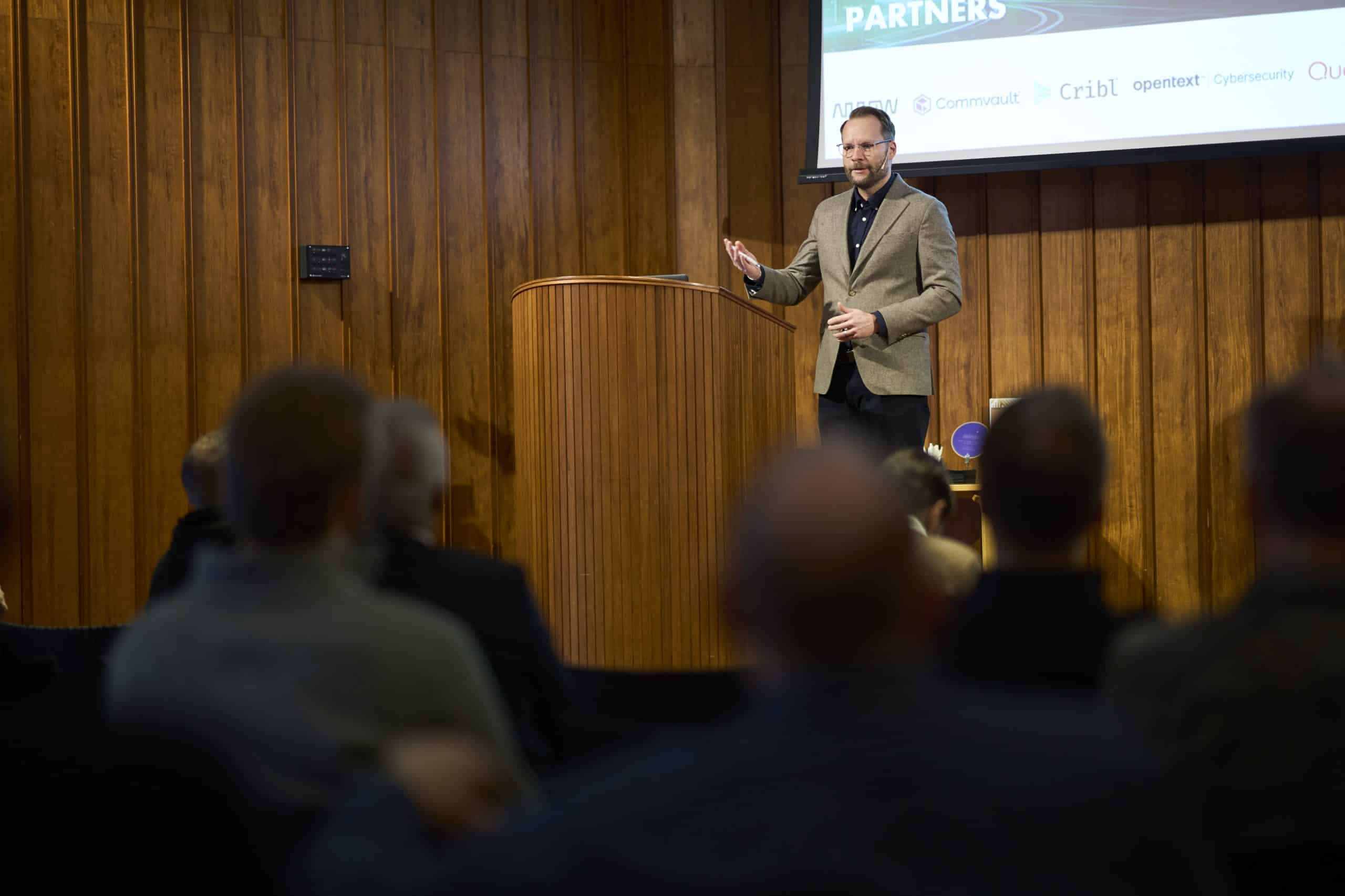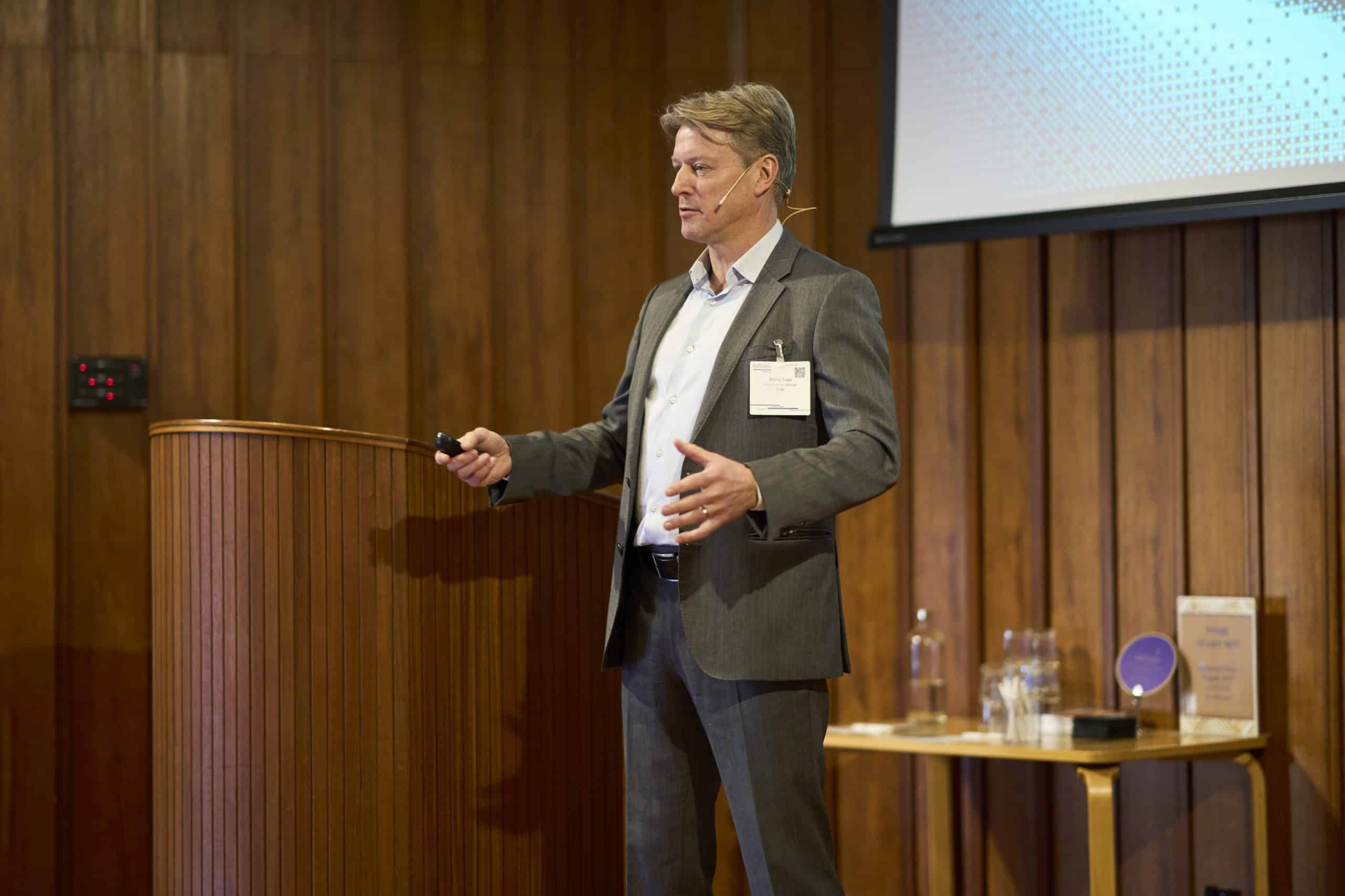The theme of this year
Uniting Sweden: A.I. vs. A.I.
From national infrastructure to healthcare and banking, digital systems power every aspect of modern life. But with progress comes exposure. Today’s attackers, be it state actors, cybercriminals, or lone hackers, exploit vulnerabilities with increasing sophistication.
AI is reshaping the threat landscape. But beyond the hype, what does it really mean for security strategy, governance, and the human element? At State of Cyber Security, we cut through the noise and deliver sharp insights on the real impact of AI — and how to harness it effectively.
We’ll also dive deep into urgent challenges like geopolitical risk, supply chain security, Zero Trust, rising regulation, and organizational resilience — alongside key themes like culture, awareness, and developing tomorrow’s security talent.
Because no one can face this alone. It takes collaboration, bold thinking, and shared knowledge to protect what matters most.
Topics that will be covered:
This remains a critical concern. Recent reports highlight the evolving nature of cyber threats, with state actors increasingly targeting critical infrastructure and digital services to disrupt societal functions and economic stability.
These threats continue to be prevalent. Ransomware attacks have become more sophisticated, often involving advanced persistent threats (APTs), while phishing campaigns are increasingly leveraging AI to craft convincing messages.
Sweden is in the process of transposing the NIS2 Directive into national law through the proposed Cybersecurity Act. This legislation aims to enhance cybersecurity across 18 critical sectors, including energy, transport, and healthcare. It introduces stricter requirements for incident reporting, risk management, and supply chain security.
AI is increasingly being integrated into cybersecurity strategies for threat detection, incident response, and predictive analytics. The European Commission has announced significant investments in AI and cybersecurity to bolster digital resilience.
With the rise of cloud services, securing cloud infrastructures has become paramount. The EU is working on a cybersecurity certification scheme for cloud services to ensure compliance with stringent privacy and data sovereignty requirements.
As organizations increasingly adopt technologies like IoT, 5G, AI, and quantum computing, the threat landscape evolves. These innovations bring new vulnerabilities that require tailored security approaches. EU policy and Swedish digital strategies are prioritizing resilience for these emerging technologies, with growing investment and regulation in place.
Sweden’s strategic position in Europe, with key roles in the EU and NATO, makes it a prime target for state-sponsored cyber espionage. Hackers may aim to steal intelligence on Swedish policies, military capabilities, or economic strategies. Sweden’s prominence in tech and defense further increases its vulnerability to sophisticated cyberattacks. The current global geopolitical uncertainty—marked by shifting alliances and rising tensions—intensifies the risk, making Sweden’s cybersecurity more critical than ever.
Collaboration between public authorities and private entities is essential for effective cybersecurity. Initiatives like information sharing, joint exercises, and coordinated response plans are being emphasized to enhance collective resilience.
Human error remains a significant vulnerability. Training programs focusing on cybersecurity awareness, phishing simulations, and promoting a culture of security are crucial in reducing risks associated with the human factor.
IAM isn’t just a technical control — it’s a strategic pillar. IAM’s role in enabling secure digital transformation, meeting regulatory demands like NIS2, and empowering business units through decentralized, governed access.
Who is this conference for?
The conference intended target group consists of participants in the following positions:
- (Chief) Information Security Officers
- Business Information Security Officers
- Technical Information Security Officers
- (Chief) Risk Officers
- Information Managers
- Security Officers / Managers
- IT Managers
- Security Architects
WHEN CAN YOU PARTICIPATE FREE OF CHARGE?
- You are part of the target group as described above
- You work at and organisaton with at least 20 FTE
- You plan three one-to-one meetings
- You agree to the terms and conditions
Participate as partner of the conference
If you would like more information about the partner packages and/or advice about participating as a partner in the conference, you can contact Aimane El Massnaoui, Sales Executive: +31 76 548 40 27.



